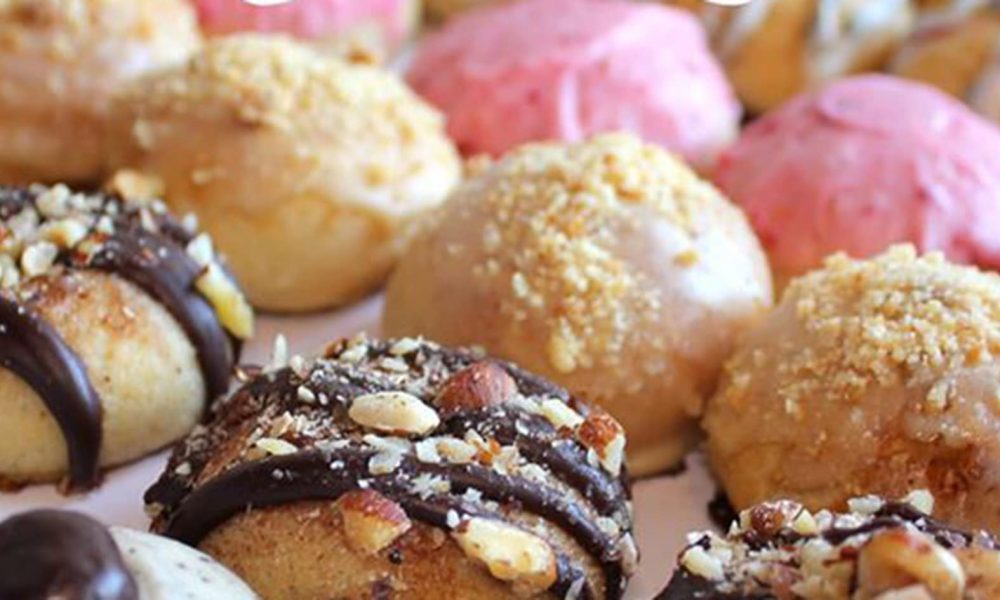Restaurant Business
By Heather Lalley
The pie and coffee concept is growing units while also expanding its wholesale, e-commerce and CPG segments.
The concept: The Pie Hole
The details: A fast-casual pie and coffee concept with six units in Southern California and two stores in Japan. All pie baking takes place in a commissary, with stores ranging from 200 to 1,200 square feet.
The backstory: The first Pie Hole opened in 2011 with a menu of sweet and savory pies. In addition to adding units, the chain is focused on extending its reach through wholesale, catering, consumer packaged goods and shipping of pies through online marketplace Goldbelly.
Why it’s worth watching: The company recently added a new menu item, stuffed and glazed two-bite circles of pie called Pie Holes. They have become a top seller, with about 1 million units sold in the past year. Through Goldbelly, the company sold an average of about 50 units each day during the holiday season. The chain plans to launch a consumer packaged goods (CPG) line this year. The Pie Hole moved into its existing commissary space about 16 months ago and is at only 20% capacity, so there’s much room for further growth.
HERE ARE FIVE GROWTH-MINDED QUESTIONS WITH SEAN BRENNAN, FOUNDER AND CEO OF THE PIE HOLE:
1. You’re expanding on multiple fronts. What’s the rationale behind that strategy?
The way we look at expansion isn’t just limited to retail restaurant development. We think the landscape in foodservice and hospitality has really changed exponentially in the last five years. We really need to be relevant and present across multiple hospitality and revenue centers, e-commerce, delivery, catering. … Restaurants, as they scale and to remain relevant, you need to have all the tentacles. Most concepts don’t have the CPG opportunity because they are made fresh, made to order. You need to remain relevant and meet your customers where they are. You can’t assume you can get them to find parking and walk into the restaurant.
2. Why did you adopt the commissary model?
We originally were baking in each shop. Then we moved to a centralized baking facility. It’s much better for consistency and economy of scale. Everything is coming out of one kitchen, [so] I only have one team I need to manage to make sure everything is perfect. We’ve been based on the commissary model for about five years.
3. Does any baking happen at the individual Pie Hole locations?
There’s no baking that takes place at the units, but there is a lot of finishing. Our honey custard pie gets fresh berries and honey drizzle before it’s served. We make fresh whipped cream and do all the toppings and the freshness cues the guests like to see. We do a good job of maintaining the pie shop culture. We want all of our baristas and people who work in the space to have a connection with the product.
4. How did your partnership with Goldbelly come to be?
We spent a lot of time telling people “no.” Can you ship a pie to my mom? Can I sell your pie in my restaurants? Those weren’t opportunities we wanted to tackle just yet. When we moved to a new facility, we had the space to do fulfillment for e-commerce. … Goldbelly had been asking us. … We weren’t really prepared for how successful it was going to be. We’re a hospitality company, and our No. 1 goal is to make people happy. If we can fulfill that mission and extend our reach, it’s the core of our business. … The majority of our sales are actually Pie Holes because they’re such a unique product and we don’t have any competition.
5. How were your Pie Holes developed?
It’s actually a secret. We got access to some very, very special, specific machinery, some equipment that helps us produce these Pie Holes. It takes the pie dough and fills it into a round. … People think about pie as an indulgence, but it’s also a comfort food. Not everybody wants to eat a whole slice of pie. [Pie Holes] increase the utility. Plus, you can try different flavors. … It’s smaller and they’re cute. But it’s still pie, so it’s familiar.
Article from Restaurant Business